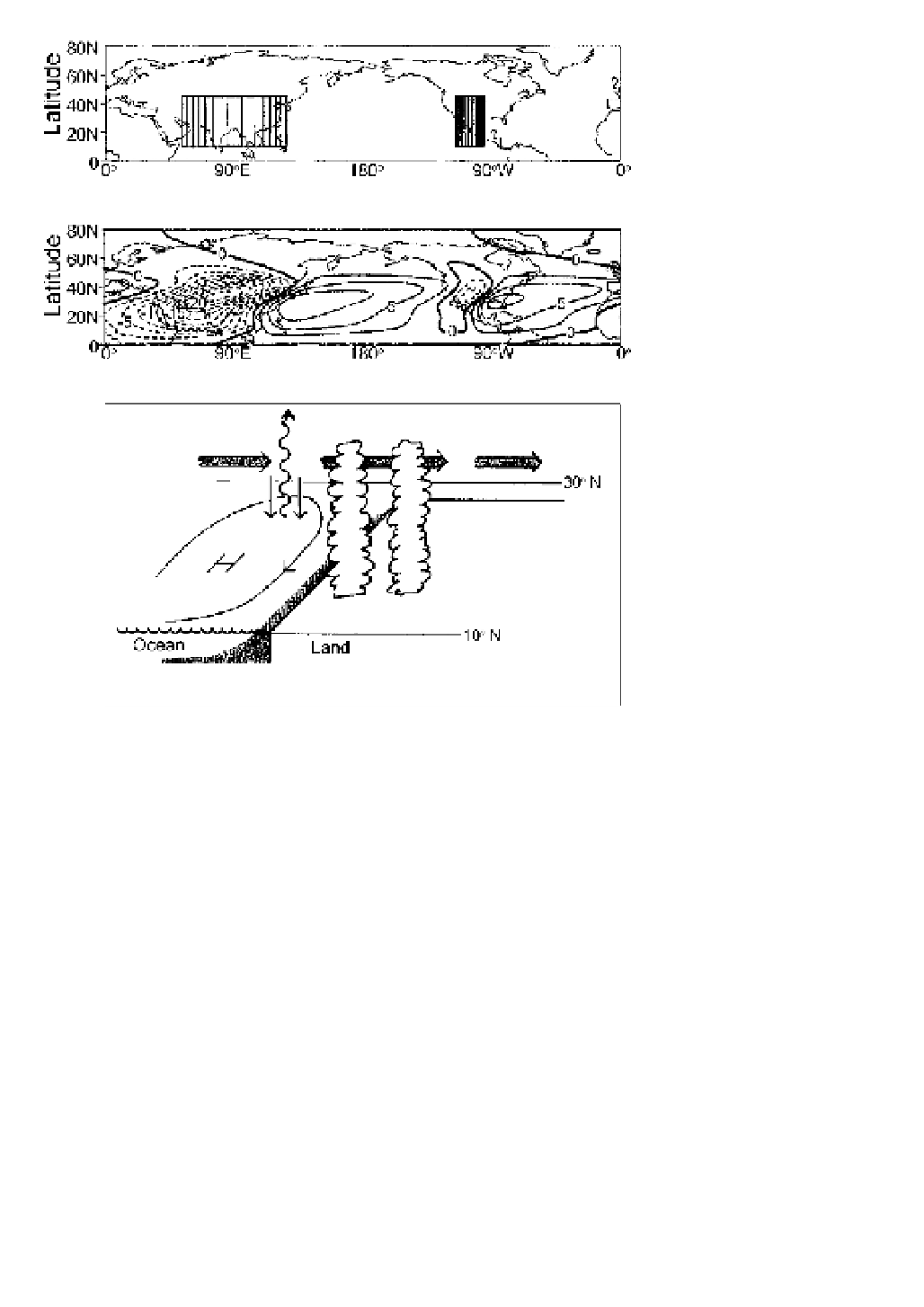Geoscience Reference
In-Depth Information
Figure 7.21
Schematic illustrations
of suggested processes that form/
maintain the northern subtropical anti-
cylones in summer. (A) Boxes where
summer heat sources are imposed in
the atmospheric model; (B) Pattern of
resultant stationary planetary waves
(solid/dashed lines denote positive/
negative height anomalies) (Chen
et
al.
, 2001); (C) Schematic of the circu-
lation elements proposed by Hoskins
(1996). Monsoon heating over the
continents with descent west- and
poleward where there is interaction
with the westerlies. The descent leads
to enhanced radiative cooling acting as
a positive feedback and to equator-
ward motion; the latter drives Ekman
ocean drift and upwelling.
Sources
: From P. Chen
et al.
(2001)
J. Atmos. Sci
., 58, p.1832, Fig. 8(a); and
from B. J. Hoskins (1996)
Bull. Amer.
Met. Soc.
77, p. 1291, Fig. 5. Courtesy
of the American Meteorological Society.
A
B
C
lacking, but they undoubtedly form an essential part of
the story.
In the light of these theories, the origin of the
subtropical anticyclones that play such an important
role in the world's climates may be re-examined. Their
existence has been variously ascribed to: (1) the piling
up of poleward-moving air as it is increasingly deflected
eastward through the earth's rotation and the conserva-
tion of angular momentum; (2) the sinking of poleward
currents aloft by radiational cooling; (3) the general
necessity for high pressure near 30° latitude separating
approximately equal zones of east and west winds; or to
combinations of such mechanisms. An adequate theory
must account not only for their permanence but also
for their cellular nature and the vertical inclination
of the axes. The above discussion shows that ideas of
a simplified Hadley cell and momentum conservation
are only partially correct. Moreover, recent studies
rather surprisingly show no relationship, on a seasonal
basis, between the intensity of the Hadley cell and that
of the subtropical highs. Descent occurs near 25°N in
winter, whereas North Africa and the Mediterranean are
generally driest in summer, when the vertical motion
is weak.
Two new ideas have recently been proposed (Figure
7.21). One suggests that the low-level subtropical highs
in the North Pacific and North Atlantic in summer are
remote responses to stationary planetary waves gen-
erated by heat sources over Asia. In contrast to this view
of eastward downstream wave propagation, another
model proposes regional effects from the heating over
the summer monsoon regions of India, West Africa and
southwestern North America that act upstream on the
western and northern margins of these heat sources.
The Indian monsoon heating leads to a vertical cell with
descent over the eastern Mediterranean, eastern Sahara
Desert and the Kyzylkum-Karakum Desert. However,
while the ascending air originates in the tropical easter-
lies, Rossby waves in the mid-latitude westerlies are
thought to be the source of the descending air and this
may provide a link with the first mechanism. Neither
of these arguments addresses the winter subtropical


